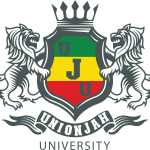Title : Emperor Haile Selassie I and the Soviet Union
By UnionJah Observer | April 26, 2025
Emperor Haile Selassie I and the Soviet Union: Diplomacy Beyond Ideology
🇷🇺 A Visit of Strategy and Sovereignty

During the Cold War era, the world was divided between the Western bloc and the Eastern (Communist) bloc.
In this tense political climate, Emperor Haile Selassie I made the bold move to visit the Soviet Union, showing his commitment to Ethiopia’s independence and non-alignment.
Despite Ethiopia’s traditional monarchy being ideologically different from Soviet communism, Haile Selassie’s visit was strategic:
he sought economic development, military support, and international recognition without surrendering Ethiopian sovereignty.
The Historic Visit
- Haile Selassie I visited the Soviet Union in 1959.
- He was received with full state honors by Nikita Khrushchev, leader of the USSR.
- Lavish ceremonies were held in Moscow to welcome the Conquering Lion of Judah.
- Military parades, state dinners, and cultural performances celebrated the Emperor’s arrival.
✒️ Haile Selassie’s presence in Moscow symbolized respect for Ethiopia as a sovereign, ancient nation — even by one of the world’s most powerful communist states.
Key Agreements and Exchanges
- Economic Cooperation:
Ethiopia secured agreements for Soviet assistance in industrial development, education, and infrastructure. - Military Relations:
Ethiopia gained access to military training and arms supplies, balancing Western and Eastern influences. - Cultural Exchange:
Programs were launched allowing Ethiopian students to study engineering, medicine, and science in Soviet universities.
The Emperor skillfully used Soviet resources without adopting communist ideology, maintaining Ethiopia’s ancient Christian and royal identity.
Ethiopia’s Strategic Balance
Haile Selassie’s diplomacy with the Soviet Union was part of his grand strategy:
- Keep Ethiopia independent during Cold War pressures.
- Avoid becoming a satellite state of either the USA or USSR.
- Modernize Ethiopia using international partnerships.
His ability to work with vastly different world powers without betraying his principles showed his unmatched wisdom as a world leader.
Legacy of the Visit
- Ethiopia’s infrastructure (especially in areas like hydroelectricity, engineering, and transport) saw growth from Soviet assistance.
- Many Ethiopian intellectuals and professionals received education during this period and later contributed to Ethiopia’s development.
- Haile Selassie’s visit stands as a major moment where an ancient African monarchy gained recognition and respect in the modern, ideological world.
Final Reflection
Haile Selassie I’s diplomacy with the Soviet Union teaches us a powerful lesson:
- Even in a divided world, dignity, intelligence, and vision can secure respect.
- Sovereignty is not about isolation, but about wise navigation through global powers.

